#pinar del rio
Explore tagged Tumblr posts
Text
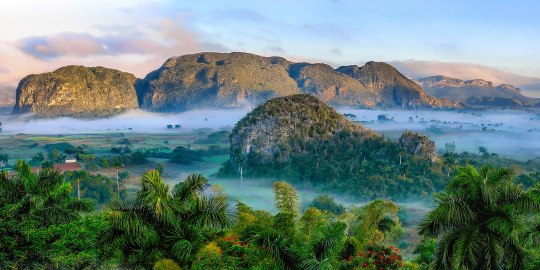
Viñales, Province Pinar del Río, Cuba
Taken by Simon Berger
0 notes
Text
Un palacete europeo en Cuba
La hacienda Cortina en Cuba, cuyos terrenos abarcaban tres municipios pinareños, es similar a un palacete europeo CDMX, México.- Hay en Cuba un castillo rodeado de una hermosa vegetación. Al llegar a él, un enorme pórtico con dos torres al estilo medieval y la inscripción “Cortina” da la bienvenida. Luego el visitante puede seguir un sendero de mármol que lo conduce a la vivienda principal. En…
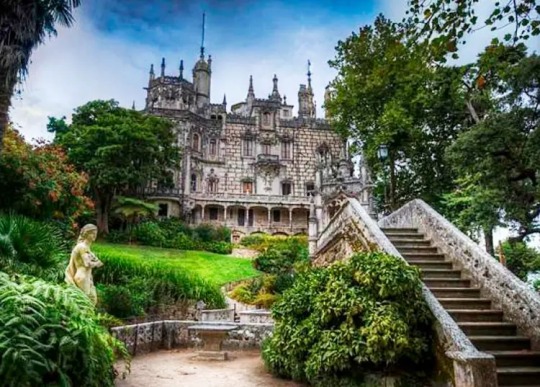
View On WordPress
0 notes
Text
Explore the stunning landscapes of Pinar del Río with the freedom of a rental car. From the iconic Viñales Valley to hidden gems, discover the best routes, car rental tips, and attractions to make your Cuban journey unforgettable.
0 notes
Text

La Palma, Pinar del Rio, Cuba
49 notes
·
View notes
Text
Click the Title Link to DOWNLOAD for Free from the BLACK TRUEBRARY

Click the Title Link to DOWNLOAD for Free from the BLACK TRUEBRARY
Outside of Cuba, Palo is generally called Palo Mayombe ; however, this is a misnomer since not all lineages and houses are truly Mayombe – in fact, most are not. To my knowledge there is only one (perhaps a couple) Munanzo outside of Cuba that are accepted as a true Mayombe houses amongst the elders on the Island.

In Cuba, “Palo Monte” is used far more frequently to speak to the entire body of Regla-Kongo Palo tradition. Other terms such as Palo Cruzado (‘crossed palo’, denoting heavy syncretization with other religions), Palo Cristiano (‘Christian palo’) and Palo Judio (‘Jewish palo’, not actually jewish, but simply non-Christian) deserve a brief mention. However, these are not specific ramas of Palo, but rather terms that are used to denote the degree of syncretism and mixing in individual lineages and practices.
There are many houses (munansos) and foundational lineages (ramas) of Palo Monte, but commonly they are understood to fit within three major forms or sub ‘reglas’ within the greater Regla-Kongo:
Mayombe
Biyumba (Vrillumba o Brillumba)
Kimbiza
Palo Mayombe is the oldest and most orthodox form of Palo. The origins trace back to a specific Nkisi cult in the Mayombe region of Cabinda (NW Congo) from where it gets its name and the tradition came into its own in the caves and wilderness of the Pinar del Rio highlands of Cuba. Mayomberos typically shun away from syncretism and are extremely orthodox in our practices. The most well known of the Mayombe houses are the houses of “Batalla Saca Empeño” and “Bejuco Nfinda”.
Palo Biyumba developed out of Palo Mayombe and rose in popularity during Cuba’s war of Independence. It was the first regla to initiate people of non-Bantu ancestry and frequently worked with and developed pacts with dead spirits of no particular blood or spiritual lineage (often times to send them out for warring intentions). It is a vast regla and has many ramas and sub-lineages. Indeed, a great number of houses today are some offshoot of Biyumba. Broadly speaking, Palo Biyumba is more oriented toward the various mpungos and over time some lineages have introduced a degree of syncretization with elements of Ocha and Catholicism.
Palo Kimbisa was popular on the eastern side of the Cuban island and has absorbed many influences from Catholicism to Freemasonry to Haitian Vodou. Kimbisa likely originated within an already syncretized Catholic-Kongo religious tradition from the Kingdom of Kongo following Kimpa Vita’s Christian reform in the 18th C. In Kimbisa the mpungos are paramount and are seen as divinities and saints. Thus, Kimbiseros will venerate the mpungos and focus much of their work calling upon them, instead of upon the dead. The most well known Kimbisa rama is Andrés Petit’s La Regla Kimbisa de Santo Cristo del Buen Viaje.
The Kimbisa prendas/ngangas I have seen also tend to be huge in comparison to Mayombe. Although my elders have reassured me that there are Kimbisa prendas that are built almost identical to Mayombe as there is more variance per house/lineage than across the greater sub-reglas. It is also common to see Kimbisa (as well as Briyumba) prendas with crucifixes. Moreover, many Kimbiseros and Biymberos will make a distinction between prendas judias or prendas ndoki(those without crucifixes and containing the bones of non-baptized individuals) used to curse, kill, and other malefica; and prendas cristianas (with cross and baptized nfumbe) used to heal and general benefica. This distinction does not appear in Mayombe.
Assortment of now defunct/dormant Briyumba Ngangas on display in the Museo Municipal de Regla
Click the Title Link to DOWNLOAD for Free from the BLACK TRUEBRARY
24 notes
·
View notes
Text
Havana, August 31– A shipment of 800 tons of wheat flour — collected by solidarity activists in the U.S. — has arrived in Cuba. The donation will provide bread for millions of people in the provinces of Pinar del Rio, Artemisa, Mayabeque, Matanzas and Havana.This campaign was organized in the United States by the New York City-based “Let Cuba Live: Bread for Our Neighbors” campaign.
14 notes
·
View notes
Note
I have a question? Let’s say if a Cuban spiritualist was from Pinar del Rio and they have indigenous ancestry however sources say the Ciboney Taino inhabited Pinar del Rio and other sources say the Guanahatabey inhabited Pinar del Rio and other sources say both inhabited land, then which source should that person trust? And do we have information on the Guanahatabey spirituality?
Hey! This will be a long answer about Indigenous Caribbean Identity so check below the cut for more!🌺🌴🐠🦜🌀🦩🥭🍋🟩🥥
This is a complex question. I would say the biggest thing to remember is that the term “Taíno” is an umbrella term to reference many different ethnicities of Arawak-Speaking Indigenous Caribbeans. There were many types of Taíno people, including Timucua and Tequesta in Florida, Lucayo in the Bahamas, Ciguayo in Kiskeya and Igneri in Boriken.
As for the term Ciboney, some say it was a separate tribe but the general consensus is that they were a Taíno ethnicity with a separate but mutually intelligible language. They were connected culturally to groups from Jamaica, Florida, Bahamas and modern day Haiti, where as Taínos of the eastern Caribbean were closer in culture. They also had language connections to the Macorix and Guanahatabeys being Waroid languages, aka where we get the term Guajiro. So the Ciboney are a Taino-Arawak group that had ancestrally mixed with the Waroid Guanahatabeys but still maintained moslty Taíno culture.
There were also many other groups who weren’t Taíno. The most well known is the Kalinago, but the Guanahatabey is one from Cuba that is also known to actually have been in Cuba BEFORE the Taínos got there. They had a culture very similar to the Calusa of Southwest Florida. And this is all pre-Colonization, so these groups were already interacting and moving around for thousands of years.
Then with colonization, many Native groups were transported to other places, and in Cuba specifically we have Taíno migrations from the East to the West very early on. We also have Natives from Florida and Mayans from Mexico, and more natives being brought in to cuba and intermarrying with other ethnic groups. These migrations all affected indigenous communities and led to alot of cultural exchange and mixture, as well as loss.
As for Indigenous Cuban Identity, I claim Taíno or Ciboney Taíno because after colonization any remaining Guanahatabeys were assimilated to Taíno Cimarron (maroon/runaway) groups. I consider Guanahatabeys part of my ancestors but I choose to identify as Taíno or simply Indigenous Caribbean. My family all identify as Guajiros, as do I, which is more a lifestyle but definitely has ties to the Classic Taino, Ciboney and Guanahatabey traditions passed down.
As for trusting sources, I would say read EVERYTHING with a grain of salt. Academics often lack cultural nuance and understanding, which can mean alot of their inferences are flat out wrong so try to stick with confirmed info. It is confirmed the Tainos and Guanahatabeys and Ciboneys all moved around and lived in the same parts of the Island at the same time and separately. As for non-academic sources, just be aware that much of what is passed off as Taino or Indigenous Caribbean culture is actually just Pan-Indigenous or straight up a different culture.
Trust yourself, use your intuition and discernment and always be committed to improving and striving for a culturally authentic, fulfilling and respectful practice that is well rounded in both Spirituality and Community! Whether that is with a yukayeke, with the Indigenous tribes you live near locally or with your own indigenous family and friends! So many Yukayekes in the Modern Taíno community try to claim superiority or that they have all the secrets knowledge and the only correct beliefs. You should be weary of anyone trying to restrict you when their own elders often are reconnecting or were just scholars before becoming pop-up Caciques.
If you go to the Cuban version of Wikipedia, when it is active, you can find better information on the Guanahatabey and Ciboney than on American wiki. Try researching the terms ‘Guayabo Blanco’ and ‘Cayo Redondo’ for information on Ciboney culture and beliefs, and how even within this sub-group there were MORE sub-groups. As the Guanahatabeys were not a ceramic culture, we have very little info on them academically. Try researching Calusa beliefs as they had similar environments and were connected through trade routes.
If you have any more questions I would love to answer them but you should ask them on insta or in chat so I can link easier and answer in more depth!!
My asks are always open still tho :)
Luz y progreso
#witchcraft#florida#bioregional animism#bruja#brujeria#florida witch#santeria#swamp witch#witch#traditional witchcraft#taino spirituality#taino#ciboney#indigenous#floridasprings#agua dulce#caribbean#indigenous caribbean#carib#caribe#kalinago#calusa#seminole#native american
8 notes
·
View notes
Text

“A Cuban quenches his thirst with water from a large ceramic jug, taken in 1962 in the province of Pinar del Rio.”
Photo by: Peter Heinz Junge
6 notes
·
View notes
Text
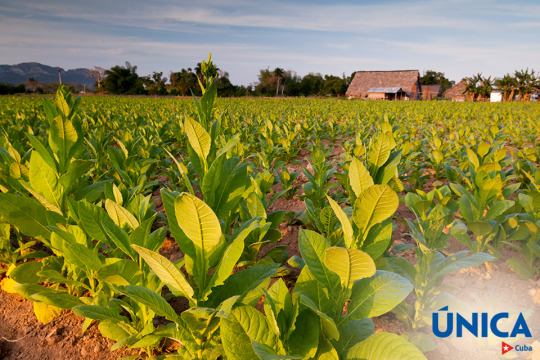
Pinar Del Rio, Cuba is home to the finest Tobacco in the world, Discover Pinar Del Rio, and more, with Love Cuba, the UK's#1 Cuba holiday specialist. 🍃🔥🤩
Call us today on 0207 071 3636 or visit our official website https://www.lovecuba.com/
#cuba#cuban#lovecuba#lovecubauk#ilovecuba#explorecuba#experiencecuba#discovercuba#cubaunica#cubaholidays#tobaccofields#tobacco#cigars#caribbean#cubatravel
2 notes
·
View notes
Text






Cohiba Robustos Reserva Cosecha 2014
These Cohiba Cuban cigars are 124 mm long and have a Robusto module. For Havana aficionados, this is probably the most popular vitola. And this Cigar is set for a price of $6,000 box of 20 which makes it one of the most popular vitola.
Length: 4 7/8
Ring: Gauge 50
Shape: Robusto
Taste: Spicy
Strength: Medium to Full
Duration: 30 - 45 minutes
Cohiba Robusto Reserva Cosecha 2014 cigar is a cigar edition extremely limited of one of the world's most prestigious tobacco brands, Cohiba.
An exclusive production by only 5,000 numbered boxes was launched, each opulent box being lacquered and bearing the brand name Cohiba and the Reserva logo.
These Cohiba Cuban cigars are 124 mm long and have a Robusto module.
For Havana aficionados, this is probably the most popular vitola. The superiority of cigars is due to their ageing process. Each leaf has been aged for more than three years. The leaves come from the Vuelta Abajo de Pinar del Rio, one of best tobacco growing districts in the world.
Cohiba Robusto Reserva Cosecha 2014 embodies luxury and exclusivity and is in the process of becoming one of the most expensive Reserva cigars of all time.
Buy Cohiba Cigars
0 notes
Text

🐝 ⋅𓂃 ࣪ 𝐬𝐨𝐧 𝐨𝐟 𝐚𝐡 𝐦𝐮𝐳𝐞𝐧 𝐜𝐚𝐛 ≻ zachariah antonio rosamel ↳ vanity ′ threads ′ prompts ′ aesthetic ′ musing ′
🐝🍯🐝🍯🐝🍯🐝🍯🐝🍯🐝 loved by theodore
𝐧𝐚𝐦𝐞: zachariah antonio rosamel 𝐧𝐢𝐜𝐤𝐧𝐚𝐦𝐞𝐬: riah ( preference ), zachari 𝐠𝐨𝐝𝐥𝐲 𝐩𝐚𝐫𝐞𝐧𝐭: ah muzen cab 𝐝𝐚𝐭𝐞 𝐨𝐟 𝐛𝐢𝐫𝐭𝐡: september 25, 1997 𝐛𝐢𝐫𝐭𝐡𝐩𝐥𝐚𝐜𝐞: pinar del rio, cuba 𝐚𝐠𝐞: twenty-seven 𝐡𝐞𝐢𝐠𝐡𝐭: 5'9" 𝐝𝐨𝐦𝐢𝐧𝐚𝐧𝐭 𝐡𝐚𝐧𝐝: right handed 𝐞𝐝𝐮𝐜𝐚𝐭𝐢𝐨𝐧 𝐥𝐞𝐯𝐞𝐥: college graduate 𝐨𝐜𝐜𝐮𝐩𝐚𝐭𝐢𝐨𝐧: nurse 𝐟𝐚𝐜𝐞𝐜𝐥𝐚𝐢𝐦: alberto rosende
𝐩𝐚𝐫𝐞𝐧𝐭𝐬: ah muzen cab ( blessed by ) + isabela rosamel ( mother ) + alexander sullivan ( step-father / deceased ) 𝐬𝐢𝐛𝐥𝐢𝐧𝐠𝐬: six younger siblings 𝐩𝐞𝐭𝐬: francesca ( tabby cat )
𝐚𝐬𝐭𝐫𝐨𝐥𝐨𝐠𝐢𝐜𝐚𝐥 𝐬𝐢𝐠𝐧: libra sun , pisces moon , cancer rising 𝐩𝐨𝐬𝐢𝐭𝐢𝐯𝐞 𝐭𝐫𝐚𝐢𝐭𝐬: loyal , charming , romantic, warm, intellectual 𝐧𝐞𝐠𝐚𝐭𝐢𝐯𝐞 𝐭𝐫𝐚𝐢𝐭𝐬: sensitive, indecisive, inflexible, manipulative, shallow 𝐪𝐮𝐢𝐫𝐤𝐬: chuckles a lot when he's nervous or likes someone. 𝐩𝐞𝐭 𝐩𝐞𝐞𝐯𝐞𝐬: loud/obnoxious guys , people talking during a movie , youtube ads 𝐡𝐨𝐛𝐛𝐢𝐞𝐬: video games , playing guitar , painting, working out , hiking , camping , golfing , photography , running , yoga, singing , swimming .
𝐬𝐞𝐱𝐮𝐚𝐥 𝐨𝐫𝐢𝐞𝐧𝐭𝐚𝐭𝐢𝐨𝐧: homosexual , homoromantic 𝐬𝐞𝐱𝐮𝐚𝐥 𝐩𝐨𝐬𝐢𝐭𝐢𝐨𝐧: verse bottom
𝐜𝐥𝐨𝐭𝐡𝐢𝐧𝐠 𝐬𝐭𝐲𝐥𝐞: he enjoys a more leisure vibe. anything casual he'll be in. mainly hoodies. he can be stylish, but only if he is trying to impress someone. nice shoes, usually wears jeans, black top with a nice jacket, but at the end of the day he will be in hoodies and be content. 𝐩𝐫𝐨𝐦𝐢𝐧𝐞𝐧𝐭 𝐟𝐞𝐚𝐭𝐮𝐫𝐞𝐬: his smile , his lips ( which are very kissable 😉 ) , curly hair , his laughter
𝐩𝐞𝐫𝐬𝐨𝐧𝐚𝐥𝐢𝐭𝐲: esfj - consul 𝐢𝐧𝐬𝐩𝐢𝐫𝐚𝐭𝐢𝐨𝐧𝐬: anthony bridgerton ( bridgertons ) , daphne bridgerton ( bridgertons ) , nick nelson ( heartstopper ) , caroline forbes ( the vampire diaries ) , jenna rink ( 13 going on 30 ) , victor salazar ( love, victor ), josh rosza ( the originals )
3 notes
·
View notes
Text

Qué islas hay en Cuba?
Cuba es un archipiélago constituido por la Isla de Cuba, la Isla de la Juventud y unas 1.600 isletas y cayos, alcanzando una superficie total de 110.860 km2. Está situada a la entrada del Golfo de México, en el Mar Caribe.
¿Cómo se llaman las islas cerca de Cuba?
Islas de Cuba
Islas en Varadero. Cayo Blanco. ...
Islas en Pinar del Rio. Cayo Levisa. ...
Islas en Sancti Spíritus. Cayo Santa Maria. ...
Islas en Cayo Largo. Cayo Largo del Sur. ...
Islas en Nueva Gerona. Criadero de caimanes y tortugas. ...
Islas en Cayo Ensenachos. Cayo Ensenachos. ...
Islas en Cayo Santa María. ...
Islas en Holguin.
¿Cuál es la lengua oficial de Cuba?
Español
Cuba / Idioma oficial
El español es el idioma oficial y prácticamente el único que se emplea en Cuba y en su capital.
¿Cómo llamó la Isla de Cuba Cristóbal Colón?

"Lo que pasó con el nombre Cuba es algo gracioso, porque él la nombra (a la isla) Juana y los nativos la llamaban 'Colba' y la próxima vez que él nombra a la isla, la llama Cuba", explica el historiador Rosa, autor de varios libros sobre la vida de Cristóbal Colón.
¿Cuántos archipiélagos tiene Cuba?
El archipiélago cubano está formado por la Isla de Cuba, la Isla de la Juventud y unas 1600 isletas y cayos agrupados en cuatro diferentes conjuntos que son los subarchipiélagos de: Los Colorados, Jardines del Rey o Sabana – Camagüey, Jardines de la Reina y Canarreos.
¿Cómo se divide la Isla de Cuba?

En la actualidad, después de 7 Divisiones Políticas Administrativas, la Isla de Cuba tiene 15 provincias y un municipio especial llamado ¨La isla de la juventud¨ que se ubica al sur occidental de Cuba. Estas transformaciones y Divisiones Territoriales quedan explicada y argumentada de forma diáfana en este trabajo.
¿Cómo se llama la playa de Cuba?
Playa Girón es una pequeña playa en la margen oriental de la Bahía de Cochinos, al centro sur de Cuba, que hoy es un centro turístico.
¿Cómo se le dice al tomate en Cuba?
En Cuba dije Jitomate, aunque me entendieron, revelé que era de México. En general en el mundo lo conocen mayormente como tomate. Saludos.
¿Qué dijo Colón cuando vio a Cuba?
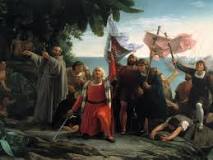
Cuenta la historia que una vez que Colón tocó suelo cubano, se arrodilló en la arena con la cabeza inclinada hacia arriba y exclamó: “Ésta es la tierra más hermosa que ojos humanos hayan visto”
¿Qué es lo que más importa Cuba?
Cuba exporta principalmente azúcar y níquel a China, mientras que importa una amplia gama de suministros de equipamientos para maquinaria y transporte, así como materias primas y alimentos.
0 notes
Text
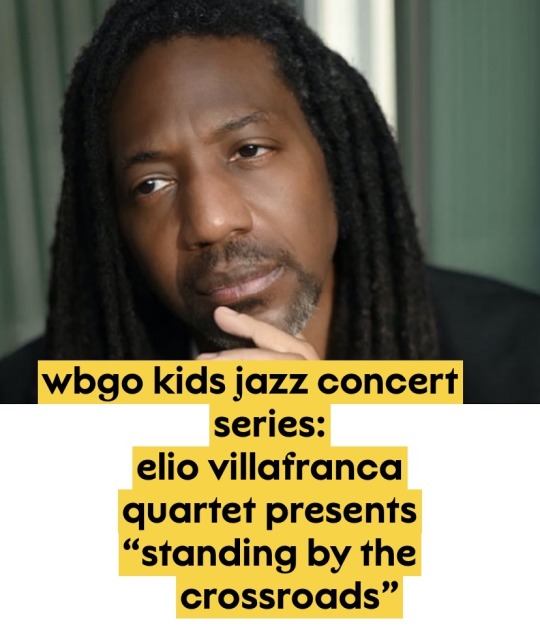
The WBGO Kids Jazz Concert Series brings world-renowned jazz musicians to concert halls and venues throughout New York and New Jersey. These concerts give young listeners the chance to discover the enjoyment of jazz, improvisation and musical collaboration.
At this concert, GRAMMY® nominated Cuban jazz pianist Elio Villafranca performs “Standing by the Crossroads” with his quartet. This piece speaks about his life, growing up in the small town of San Luis, Pinar del Rio, surrounded by Congolese drums, educated in Russian classical music, while falling in love with jazz. With a relaxed, kid-friendly atmosphere, it’s the perfect way to introduce your child (or your whole family) to the art of jazz.
1 note
·
View note
Photo
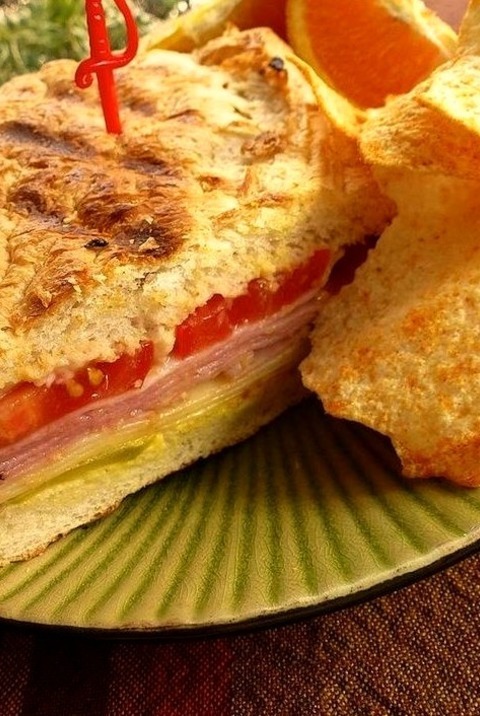
Recipe for Classic Cuban Midnight Medianoche Sandwich One of the more well-known sandwiches to originate from the island of Cuba is this one. My uncle, who formerly worked at a restaurant in Pinar del Rio, Cuba, and currently works at a Cuban cafeteria in Miami, gave me this recipe. The perfect accompaniment to this sandwich is a cold mamey milkshake and some fried plantain chips!
1 note
·
View note
Text
Cárceles y presos políticos en Cuba: el terror está tras las rejas
No hay comparación entre las condiciones en las 14 prisiones que había en Cuba antes de 1959 y las más de 200 existentes en la actualidad Jorge Luis Gonzalez Suarez Prisión Provincial ,Pinar del Rio. LA HABANA, Cuba. — Claudio Rey Moriña perteneció a la Fuerza Aérea del Ejército de Cuba en la República, y después de 1959, durante 30 años, hasta su jubilación con el grado de coronel, fue el…

View On WordPress
#Autor Jorge Luis Gonzalez Suarez#carceles#Cuba#cubanet#Huber Matos#José Daniel Ferrer#Presos Politicos#Terror#Valladares
0 notes
Link
[ad_1] Tropical Depression Ten has formed near the Yucatán Peninsula in the western Caribbean, according to the National Hurricane Center. It could become a hurricane by Tuesday afternoon and make landfall in Florida as early as Wednesday. A tropical storm warning has been issued for the Yucatán in Mexico from Tulum to Rio Lagartos, including Cozumel. A tropical storm watch has also been issued for the western tip of Cuba in the provinces of Pinar Del Rio and the Isle of Youth. The depression is expected to strengthen into a tropical storm on Sunday as it meanders in the Yucatán Channel. By Monday, the system will begin moving north, entering the Gulf of Mexico. The storm is expected to further strengthen on Monday and Tuesday as the system crosses the Gulf, moving toward Florida. The latest track calls for the storm to become a hurricane by Tuesday afternoon in the eastern Gulf of Mexico and make landfall along the western coast of the Florida Peninsula by Wednesday. The next storm name on the Atlantic’s list is Idalia. Who should pay attention? Anyone living in Mexico’s Yucatán Peninsula, Cuba and the northern Gulf and Florida coast should monitor the forecast in the coming days. The direction and strength of the upper-level steering winds around this system will dictate where it will move and how quickly. Florida Gov. Ron DeSantis issued an executive order Saturday declaring a state of emergency for 33 counties ahead of the potential inclement weather. “The Governor and the Florida Division of Emergency Management are taking timely precautions to ensure Florida’s communities, infrastructure and resources are prepared, including those communities that are still recovering following Hurricane Ian,” reads a news release announcing the executive order. When could it affect the US? The depression is expected to strengthen into a tropical storm on Sunday as it moves through the Yucatán Channel. By Monday, the system will likely enter the Gulf of Mexico, and move toward Florida. It could become a hurricane by Tuesday afternoon and hit the western coast of the Florida Peninsula by Wednesday. How strong could it get? It’s still too soon to tell how strong this system could get or how fast it could strengthen. But it will be tracking through the warmest waters in the entire Atlantic basin – a vast source of energy for a developing storm. Exceptionally warm water can provide storms the fuel needed to strengthen and sometimes undergo rapid intensification. Sea surface temperatures are record warm in the Gulf of Mexico and extremely high across the northwestern Caribbean Sea. Water temperatures need to be around 80 degrees Fahrenheit to sustain tropical development, and portions of the Caribbean and Gulf are well above the threshold. A hurdle to development: Warm water isn’t the only factor at play. This tropical system would also need upper-level winds to cooperate. High wind shear – the wind’s change in direction or speed with altitude – can tear a developing storm apart. How much wind shear this potential system faces is a critical factor in its formation and final strength. One forecast model shows more wind shear, limiting its development. Another shows less wind shear, allowing the system to develop. Either way, wind shear may decrease for a time early next week across the far northern Caribbean and eastern Gulf of Mexico, allowing any system that forms to hold together. Franklin strengthens into hurricane as it heads for Bermuda Meanwhile, out in the central Atlantic, what was Tropical Storm Franklin strengthened into a Category 1 hurricane with maximum sustained winds of 90 miles per hour, according to a Sunday update from the National Hurricane Center. This was confirmed via aircraft reconnaissance by the NOAA and Air Force Hurricane Hunters. Hurricane Franklin is currently located 575 miles south of Bermuda and is moving relatively slowly at 8 miles per hour toward the north-northwest. “Steady strengthening is forecast, and Franklin could become a major hurricane early next week,” said the center in its update. A major hurricane is defined as Category 3 or higher with winds above 111 mph. “Swells generated by Franklin are expected to begin affecting Bermuda by Sunday night,” the hurricane center said, noting, “these swells are also likely to cause life-threatening surf and rip current conditions late this weekend into early next week along portions of the East Coast of the United States.” Small variations in Franklin’s track through the weekend will determine exactly how close it gets to Bermuda when it makes its closest pass Monday and Monday night. Franklin’s winds and rainfall will extend beyond its center. Tropical-storm-force wind gusts are possible across Bermuda early next week as Franklin makes its closest approach. A few showers and thunderstorms are also possible across Bermuda as Franklin passes. [ad_2]
0 notes